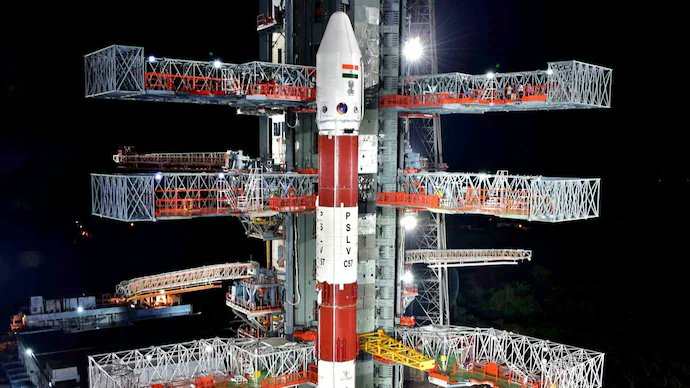The Indian Space Research Organisation (ISRO) initiated a countdown of 23 hours and 40 minutes on Friday in preparation for the Aditya-L1 mission launch.

India’s inaugural solar observatory mission, known as Aditya-L1, is slated for liftoff via the Polar Satellite Launch Vehicle (PSLV) from the Satish Dhawan Space Centre in Sriharikota at precisely 11:50 am this Saturday.
The Indian Space Research Organisation (ISRO) initiated a countdown of 23 hours and 40 minutes on Friday in preparation for the Aditya-L1 mission launch.
Roughly 63 minutes post-launch, the PSLV is scheduled to execute the satellite separation procedure, propelling the Aditya-L1 spacecraft into an unusually eccentric earth-bound orbit, anticipated to occur around 12:53 pm.
All You Need to Know about Aditya-L1 Mission
The PSLV-C57/Aditya-L1 mission represents one of ISRO’s most extensive endeavors utilizing its dependable launch vehicle. Nonetheless, the record for the lengthiest PSLV mission still stands with the 2016 PSLV-C35 mission, which concluded 2 hours, 15 minutes, and 33 seconds after takeoff.
“Aditya-L1 will stay approximately 1.5 million km away from Earth, directed towards the Sun, which is about 1% of the Earth-Sun distance. The Sun is a giant sphere of gas and Aditya-L1 would study the outer atmosphere of the Sun. Aditya-L1 will neither land on the Sun nor approach the Sun any closer,” ISRO said.
Also Read:- Devastating Blaze Claims 73 Lives, Including Children, in Heart-Wrenching Johannesburg Tragedy
After its successful launch, Aditya-L1 will remain in earth-bound orbits for a span of 16 days, executing five precision manoeuvres to attain the necessary velocity for its upcoming mission.
Stationed at a distance of roughly 1.5 million kilometers from Earth, Aditya-L1 will be steadfastly focused on the sun, marking about 1% of the vast gap between our planet and its fiery celestial neighbor.
The Aditya L-1 mission payloads are poised to yield invaluable insights into the enigmatic realms of coronal mass ejections, coronal heating, pre-flare and flare activities, their unique characteristics, space weather dynamics, particle and field propagation, and much more.
Within the satellite’s equipment arsenal, seven cutting-edge payloads await deployment: the Visible Emission Line Coronagraph (VELC), Solar Low Energy X-ray Spectrometer (SoLEXS), High Energy L1 Orbiting X-ray Spectrometer (HEL1OS), Aditya Solar wind Particle Experiment (ASPEX), Plasma Analyser Package for Aditya (PAPA), Solar Ultraviolet Imaging Telescope (SUIT), and Advanced Tri-axial High-Resolution Digital Magnetometers.
Notably, the primary payload, VELC, painstakingly developed by the Indian Institute of Astrophysics (IIA) in Bengaluru, is specifically engineered to delve into the intricacies of the solar corona and the dynamic nature of coronal mass ejections.
Furthermore, the strategic placement of the Aditya L1 satellite in a halo orbit encircling the L1 point confers a significant advantage—uninterrupted, unobstructed views of the sun, eliminating the constraints of occultation or eclipse events. This positioning promises an unparalleled advantage in the continuous observation of solar activities.
Also Read:- National Sports Day 2023:- 118th Birth anniversary of Major Dhyanchand, the Wizard of hockey
